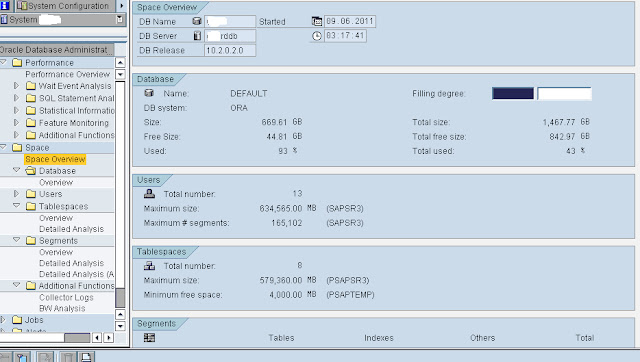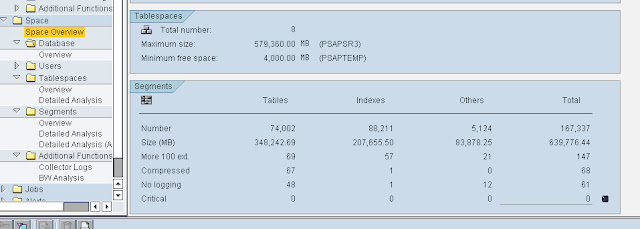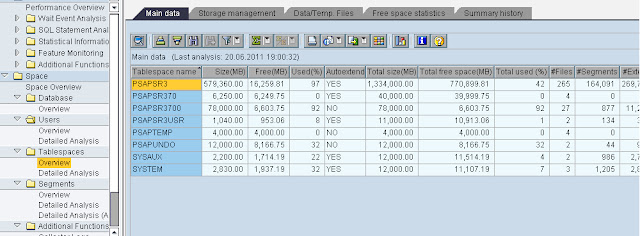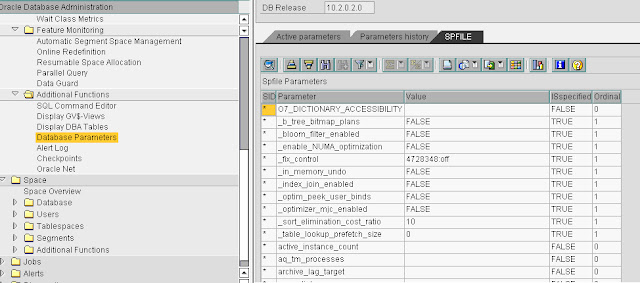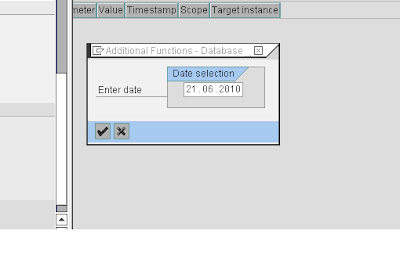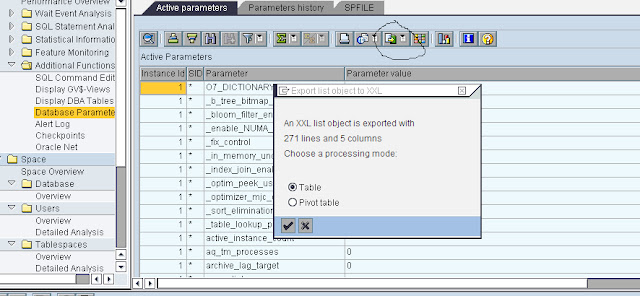A. All the process which handles by the use task based on the type of the user
request.
B. Types of work process
1) Dialog work process
2) Background work process
3) Update work process
4) Message server
5) Enqueue server
6) Gateway
7) Spool
C. What are the different types of work process in R/3?
- Dialog (D),
- Update (V),
- Enqueue (E),
- Background (B) and
- Spool(S)
Dialog work process (D):
A. Dialog work process is used to handle by the user request only
B. Dialog work process parameter name is – rdisp\wp_no_dia=2
C. Dialog work processes are minimum 2
One is user request running another one is distributing the work process
D. Each request occupies 75mb to 150mb
E. Dial work process is multiplexive
Multiplexive means at a time one (or) more use request is running
F. The user request handle by the dialog work process maximum up to 1800 seconds
G. If the user request 600 seconds default in that time data is not completed then user
request session is terminated
H. No of Dialog work process >= No of non Dialog work process
I. Dialog work process time out parameter is
rdisp\max_wp_run_timeout=600 to 1800
J. One dialog work process maximum up to 32 users are we can create
K. One application server maximum up to 100 work process are we can create
L. Work process statuses are
1) Waiting
2) Running
3) Error
4) Stopped
5) Private mode: Dedicated to the particular user
6) Sleep: Work process is running but not responding
Why: Waiting for resources
M. In sap level work process overview – SM50
N. In sap level global work process overview – SM66
O. In O.S level work process overview – dpmon
Dpmon: when the user could not login to the sap system
P. In sap level display a list of application server – SM51
Q. In sm51 transaction to identify the Relesenote, the R/3 kernel, D/B kernel, O.S.
Kernel and support packages information
R. In sap level version statuses are – system ---> status
S. In O.S level version we can see – disp+work
How to user request flow?
User request ---> dispatcher ---> work process ---> dialog work process --->
update the tables .
Background work process (B):
A. The background work process handle by the long running jobs.
The background work process that process can be executed without the user
interaction.
Background jobs are programs, printing specification and interactively can be run
automatically by the background processing system
B. Background work process parameter name is – rdisp\wp_no_btc=2
C. During the installation minimum of 2 background work process
One is defining and another one is executing
D. Scheduling the background job is – SM36
Job name should start either z or y.
Maximum 32 characters are allowed in the name.
E. Start conditions
1) Immediate
2) Date/time
3) After job
4) After event
5) At operation mode
F. Background job steps
1) ABAP program: It is a standard program (or) customized program which will execute by variant.
Variant: It is a program selection criterion to provide the inputs
during the runtime (or) execution of the program.
Variants are stored in the table is TVARV
We can create the variant from SE38
2) External command: It is used for pre defined input by system
administrator.
External commands are defined in SM49 (or) SM69
External commands & external program are executed by SAPXG
program
3) External program: It is used for direct command input by system
administrator
G. Background job is every 60 seconds default time is – rdisp\btctime=60sec
It
stored in the default profile
H. What is the background job scheduler every 60seconds?
SAPMSSYS
I. In O.S level background work process stored in global directory
usr\sap\sys\global
J. Simple job selection is SM37
K. Job statuses are
1) Scheduled: Whenever job is defined in that time job status scheduled.
2) Released: Whenever we specify date & time to schedule job.
3) Ready: When the time is elapsed.
4) Active: Job status is running.
5) Finished: All the job steps are complete successfully.
6) Cancelled: There was an error and job has been terminated, as mentioned in
the job log.
L. Background job table is TBTC*
TBTCT table is used for job time table
TBTCS table is used for job scheduler.
M. Background job status from release to ready program is – SAPMSSYZF
N. What is the difference between SA38 and SE38?
SA38 is only we can execute a program and SE38 is we can create; edit a
program, changing attributes and documents for the program
O. If we want suspend all the background jobs are using BTCTRANS1 report
P. If we want resume all the background jobs are using BTCTRANS2 report
To execute these reports and programs from SA38 (or) SE38
Q. If you have a long running job, how to you analysis? (Or) How to analyze long
running job?
Using the transaction code is – SE30
R. Standard background jobs (or) Housekeeping jobs are sap_reorg*
1) Sap_reorg_abapdumps:
Program: RSSNAPDL
2) Sap_reorg_batchinput: This job is used for delete batch input files
Program: RSBDCREO
3) Sap_reorg_jobs: This job is used for delete old background jobs
Program: RSBTCDEL
4) Sap_reorg_statististics: This job is used for run the statistics of sap tables
Program: RSBPSTDE 5) Sap_reorg_spool: This job is used for delete the old print request.
Program: RSPO0041
6) Sap_reorg_updaterecords: this job is used for delete the old update
records
Program: RSM13002
S. Background job issues (or) Why background job is cancelled?
1) File system is not accessible.
2) User id & password may be expired.
3) Dependent job is may be failed.
4) RFC connection is failed.
5) Incorrect in puts.
6) May be files corrupted at O.S level.
7) Space issues in database level.
8) Memory issues.
9) Ora-arch director is may be full.
10)Invalid file formats.
Update
Update work process (V):
A. It is used to update the database by reading from the temporary tables. It can’t
communicate with user directly
B. There are 2 types of update work process. They are v1 and v2
V1 update is used for critical jobs and V2 update is used for non critical jobs
C. We need at least one update work process per sap system and we have more than
per dispatcher
D. The update profile parameter name is rdisp\wp_no_vb, rdisp\wp_no_vb2
E. Update monitoring is – SM13
Here we can check critical and non critical updates. We can specify date and time
F. Update program administration – SM14
This transaction code is used for active to deactivate & deactivates to activate
update request and you configure the update servers, update groups and display &
monitoring update parameters.
G. Update temporary table is VB*
1) Vbmod – update function module
2) Vbdata – update data
3) Vberror – update error information
4) Vbhdr – update header
5) Vbwrk – work list for mass processing at a time have update
H. Update status are
1) Init – the status will be initial.
2) Run – update is started in main database.
3) Error – update is thrown into error.
4) Auto – update is thrown into error due to problem in database space.
I. Update tables are stored in TBLOD
J. SAPMV45A: which update work process is going on?
K. Update types are 3: they are
1. Local update: Dialog work processes update the directly in Database that is
called local update. 2. Synchronous: Dialog work processes update goes to the temporary table that is
called synchronous.
3. Asynchronous: temporary table goes to database that is called asynchronous
L. Update statistics are 4: they are
Read, Write, Execute and Delete
M. Update parameters
1) rdisp\vb_stop_acive: Set to “0” so that update can be deactivated. If the
value is set to be “1” update can be activated.
2) rdisp\vbdelete: This parameter is used to delete the old update requests
based on the no. of days. It will delete default 50 days.
3) rdisp\vbmail: It is used to send an email. It update thrown an error which
can be viewed in “SBWP” (“sap business workplace”) based on your user
(set to “0” or “1”).
4) rdisp\vbname : Name of the server running where update are processed
5) rdisp\vbreorg: It is used to delete the incomplete update request.
1=delete, 0=no, we can also schedule a background job “RSM13002” but it
will delete the update request which are in completed it will be deleted after
restarting.
6) rdisp\vb_delete_after_execution: It is used to delete the update request
soon after the execute of the update. Set it to”1” to delete the record (or)
“2” to the record will not be deleted. If it is set to “1” the background job
“RSM13002” is not required. If not schedule periodically daily during off
peak hours.
Enqueue server (E) :
A. Enqueue server handles by the locking and unlocking mechanism
B. The Enqueue server parameter name is – rdisp\wp_no_enq
C. Enqueue server table size is minimum of 4MB
D. We can increase the maximum of size is 100MB
E. Enqueue table size is enq\table_size=4mb to 100mb
F. Enqueue server log files will be stored in O.S level
Usr\sap\instance\log
G. The Enqueue server work process administrators a lock table in the shared
memory area
H. Enqueue server 4 types they are
1) Shared locks: one user can read the tables and another one user can write
the tables
2) Exclusive locks: only a particular user can read it, nobody else can access it
3) Cumulative locks: The same user with different transaction accessing the
same table then the lock will be shared with user transactions
4) Optimistic locks: One user lock the table and another user doesn’t have
read & access the table permission
I. Select lock entries – SM12
You can check (or) released the locked entries using transaction is sm12.
If there is a sudden power failure. Some of the users update entry might still be
locked. If possible asked the user to logoff first, before deleting the lock entries
J. Transaction codes: locks and unlocks – SM01
K. Enqueue server lock tables are stored in TLOCK.
Message server (M):
A. Message servers handle by the load balancing. It distributes the dispatcher where
the load balance is less.
B. Message server log files are stored in O.S level DEV_MS
Path is – usr\sap\\work\dev_ms
C. In O.S level message server monitoring is – msmon ->cmd
D. Message server port number is – 36
E. Internal port number is – 39
F. NOTE: sap server has only one message server and enqueue server.
G. NOTE: application server or dialog instance are same. And central instance is
different.
Gate way (G):
A. It is used to communication between the sap system to non sap system
B. There will be only 1 gate way for each instance.
C. In sap level gateway monitoring is - SMGW
D. In O.S level gate way monitoring is – DEV_RD
Path is – usr\sap\\work\dev_rd
E. We can check also DEV_DISP, i.s dispatcher for log files
F. usr\sap\\instance\work ----> work directory stores log of the
work process information in the format of DEV_W*
Spool (S):
A. It is used to print the documents to a printer
B. There should be at least 1 spool process in the entire system
C. The spool profile parameter name is – rdisp\wp_no_spo
D. Dialog work process (or) background work process are creates a spool request. i.e.
to print the documents
E. In O.S level spool request are stored in global directory usr\sap\\sys\global
F. The storage location specific parameter name is – rdisp\store_location
G. This parameter has 2 values they are global_G and database_DB.
H. G means it stored in global directory DB means it stored in database tables are
“TST01” and “TST03”
I. The spool request is also referred as TEMSE
Temse is used for temporary sequential objects
J. Access method: It is connection to spool server to O.S spool.
Access methods are 3 types
1) Local access method: the spool process and the spool host (printer spool)
reside on the same system. Access method type L is used for UNIX O.S and
C is used for windows O.S
2) Remote access method: the spool process and the spool host reside on two
different systems. Access method type U is used for UNIX O.S and S is
used for windows O.S
3) Front end method: access method p is the printers are connected to end
users desktop do not configured to many front and printers F and G
K. We can see all the clients and users spool request T_Code is – SP01
L. We can see specific client and user spool request T_Code is – SP02
M. Spool administration is - SPAD
N. Default printers are – SWIN, SAPWIN
